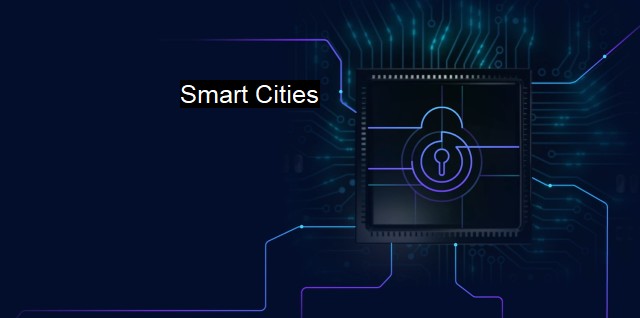What are Smart Cities?
Securing the Future of Smart Cities: Addressing Cybersecurity Challenges and the Role of Antivirus
"Smart Cities" are urban areas closely interlaced with technology built with the policy of improving the quality of life of its citizens while being sustainable. Technological aspects including modern computing applications, artificial intelligence, data analytics, and specifically, the internet of things (IoT) are used to effectively manage and provide services. These elements provide an insightful view of the city, encourage responsible resource usage, make transport swifter, maintain security and make lives more convenient in general.The embedded technology potentially introduces vulnerabilities that could be exploited maliciously. Cybersecurity thus becomes the hard shell safeguarding a smart city, and antivirus protection forms an integral part of this protective shield. A smart city hinges on the interconnectivity offered by the IoT. this interconnectivity establishes the groundwork for cyber threats.
Several cyber-threats exist that necessitate the need for an efficient security framework. Cyber-attacks target urban centers to gain unauthorized access to secure systems, conduct espionage or even sabotage. Targets of cyber-crime commonly include financial assets, social security, and personal data. The threats could also escalate to massive attacks, crashing infrastructure, jeopardizing countless lives in a well-coordinated assault.
To protect against these threats, cities have to centralize and coordinate controls, segment network architecture, establish clear protocols for emergencies, integrate response systems, and employ multi-factor authentication and encryption. City governments also need to work on legislation that obligates involved parties to ensure safety proactively.
Security applications require constant updates to shield from newly emerging threats. Antiviruses form the first defense line against many attacks. An antivirus is a software that is designed to detect, prevent and remove malicious software. For a smart city that is driven by connected devices, antiviruses with robust and specialized IoT security protection are necessary.
Cybersecurity solutions for smart cities should not just be limited to safeguarding after an attack but should proactively predict probable threats and defuse them beforehand. Constant monitoring is needed to continually analyze data traffic from the network to spot suspicious patterns and potential vulnerabilities.
The design approach of city-wide security systems should include "privacy by design" in ICT applications along with pseudonymizing and encrypting personal data. Besides, end-to-end security, including IoT devices, gateways, and backbone networks for data transport, public/private clouds, data processing, and storage infrastructure up to end-user applications used by citizens, should be addressed.
Smart City adoption encompasses embedded AI solutions not only to transmute the city’s operations but also to identify potential sources of cyber threats. Machine learning algorithms and AI have crucial functions in predictive analysis and help to analyze and keep track of any anomalies which may signal a potential virus.
Initiatives such as training for government employees and general awareness about essential cybersecurity principles could be an area of focus. For instance, people should be knowledgeable about safe online behaviors like creating a strong password, understand the concept of phishing, and know how to check a website’s security.
Public-private partnerships can come into play in rolling out such initiatives; for instance, corporations can collaborate with governments or NGOs to set up a platform that supports cyber threat information sharing. Priming the future workforce on fundamental yet significant knowledge, say essential software coding skills, can enhance the cybersecurity structure.
The evolution of smart cities should go hand in hand with the mitigation of cyber risks. Protecting IoT data flowing across smart cities is paramount. A collaborative framework involving governments, cyber-security agencies, and citizens is crucial. Cybersecurity building and elements such as antiviruses should be treated as vital elements in the journey of the cities becoming smarter to continue offering safer, efficient services without being plagued by cyber threats. The threads between cyber-resilience and digital transformation in the urban world should evolve together to build secure, citizen-centric advanced urban services focusing on enhancing the quality of life.

Smart Cities FAQs
What is a smart city?
A smart city is a city that uses technology and data to improve the quality of life for its residents, enhance sustainability, and streamline urban services.How do cybersecurity and antivirus play a role in smart cities?
Cybersecurity and antivirus are essential components of smart cities, as the interconnectedness of devices and systems creates vulnerabilities that can be exploited by cybercriminals. Without proper security measures in place, smart cities could be susceptible to cyberattacks that could disrupt critical infrastructure, compromise personal data, and even threaten public safety.What are the potential risks of having a smart city?
Smart cities carry with them the danger of cyberattacks, including DDoS attacks that can disrupt essential infrastructure and data breaches that can compromise sensitive information. Other risks include loss of privacy, exclusion of vulnerable populations, and the potential for technology to exacerbate existing social and economic inequalities.What measures can be taken to ensure the cybersecurity of smart cities?
To ensure the cybersecurity of smart cities, it's crucial to integrate security into every aspect of planning, training, and implementation. This includes using strong authentication methods, implementing encryption protocols, updating software and hardware regularly, and monitoring systems for signs of compromise. Additionally, smart city planners need to collaborate with cybersecurity experts and engage with residents and stakeholders to build a culture of cybersecurity awareness and education.| | A | | | B | | | C | | | D | | | E | | | F | | | G | | | H | | | I | | | J | | | K | | | L | | | M | |
| | N | | | O | | | P | | | Q | | | R | | | S | | | T | | | U | | | V | | | W | | | X | | | Y | | | Z | |
| | 1 | | | 2 | | | 3 | | | 4 | | | 7 | | | 8 | | |||||||